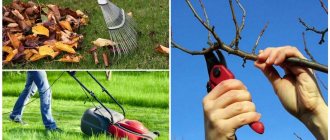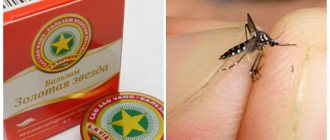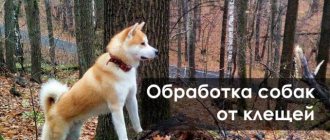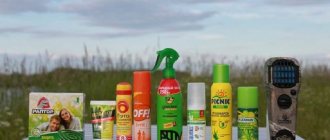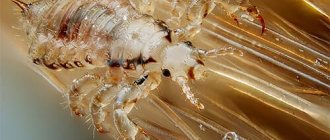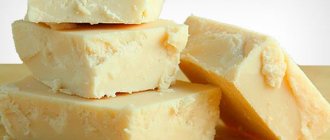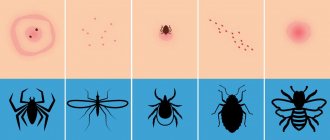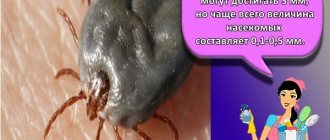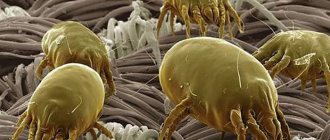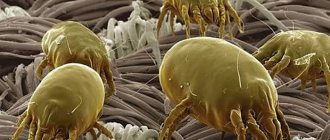Very often people call us, clearly in order, under the guise of potential clients, to extract information from us about how to properly treat an area against ticks. Moreover, from the conversation it is clearly clear that the person is not going to order processing from us, at the same time he does not know how and with what to carry it out correctly, and is afraid that we will expose him as an enemy spy and will not give him any of our professional secrets.
In fact, we do not hide anything from our experience in treating areas for ticks from anyone and can talk about it. Yes, there are a lot of nuances and little things in this procedure, which in their entirety can and do affect the effectiveness of baiting parasites. And all these nuances are almost impossible to tell either over the phone or even in a very detailed article. At a minimum, many of them follow disinfectants subconsciously, and do many things correctly without even thinking about it, simply because over many years of experience these actions have become automatic.
However, now we will tell you in as much detail as possible how to poison ticks in your area. We will tell you about the specifics of their destruction on the lawn near the house, on the garden plot among trees and beds, on public spaces overgrown with grass. Moreover, we will present all this in the form of instructions, in the “take it and do it” format. And you will see how it is done correctly and decide whether to poison the ticks yourself, or order professional treatment from specialists.
Disinfector on the treated area.
So, let's go. Where do you start treating an area for ticks?
Security and restrictions
Preparations for treating areas against ticks are toxic and are in hazard class 2 or 3 for humans, and hazard class 1 for bees and pollinators.
When interacting with the drug, generally known personal safety standards should be observed. Safety standards when working with drugs in accordance with SanPiN 1.2.2584-10 “Hygienic requirements for the safety of testing processes, storage, transportation, implementation of the use, neutralization and disposal of pesticides and agrochemicals.” .
To safely use tick repellent on areas, keep in mind that:
- Release time for people and pets is at least 3 days;
- It is prohibited to spray preparations during the flowering period, this is extremely destructive for bees and pollinating insects, limiting the flight of bees to at least 96–120 hours;
- Harvesting in the treated area is permitted no earlier than 40 days after treatment;
- the total number of treatments of the area against ticks during the season should not exceed 2-3 times.
| READ MORE: Vaccination against tick-borne encephalitis (questions and answers) |
Should I process it myself or call in specialists?
Carrying out the treatment on your own is possible, but requires awareness of the degree of responsibility and compliance with all chemical protection measures. Carefully study the information on processing rules, choose the most favorable time, without precipitation or wind. As a rule, it is easier for many people to entrust this matter to professionals who independently select the day for processing, who have special skills in such work and all the equipment.
Application regulations
2.1. Timing for treating areas against ticks
Treatment of the area against ticks is carried out throughout the spring and summer period. It is recommended to carry out the first treatment before ticks begin to become active, i.e. immediately after the snow melts. It is recommended to treat the area 2 times a year during the period April-June and August-September during the rise in the number of ticks.
2.2. Speed and duration of action
The speed of initial action is about 30 minutes after treatment. Complete destruction of ticks is achieved 3 days after treatment.
The residual effect of the drugs on grass and soil lasts an average of 1 – 1.5 months. If necessary, it is possible to re-treat the area, but not earlier than 2 weeks after the previous one.
2.3. Work order
Before using the product, it is recommended to mechanically clear the area: collect and dispose of plant debris, mow grass.
Treatment is carried out by spraying, using any type of sprayer. Moving in a zigzag from the far edge of the site to the near one, all vegetation is sprayed - lawn, areas of soil, low plantings and shrubs up to 50 cm high. The perimeter of the site is carefully processed, including along the external contour.
For processing, windless weather is selected, with a probable lack of precipitation for the next 3 days. It is advisable to carry out treatment in the morning (before 10:00) and evening (after 18:00) hours.
The consumption rate of the working solution is 1-2 l./100m2.
Like any other insecticide, the preparation of a working solution is made by diluting the concentrate first in a small amount of water (up to 1 liter), and then adding water to the required amount. The working solution cannot be stored, that is, it must be used immediately, within 6 hours after preparation.
How to find ticks in the country
During the period from April to September, summer residents risk being bitten by ticks in their own summer cottage. To reduce this risk, it is important to be prepared for it, namely:
- Carry out “white flag” tests regularly to know for sure whether there are ticks in the area.
- Protect your pet cats and dogs with special collars and periodically inspect them for ticks.
- During potentially dangerous times of the year, you need to wear tight clothing without leaving access to your body (for example, tuck your trousers into your socks);
- Use repellents.
The “White Flag” is easy to make yourself. To do this, you need to attach a panel of white (light), preferably brushed, fabric to a long stick. Ticks do not crawl on trees; they should be looked for in thick, tall grass and bushes. It is enough to walk slowly with an improvised flag so that the banner touches the grass and bushes. And if there are mites, they can be found on the fabric of the panel.
The verification process involves passing the area several times and applying a “flag” so that it confidently touches the plant surface. You need to walk slowly, avoiding twisting. Every 50 steps it is necessary to check the “flag” for the presence of ticks or plant debris. At the end of the diagnosis, the approximate number of ticks in the entire area of the site will become clear. To avoid getting bitten by a tick, it is important to carefully inspect your clothing before removing it.
Even if no ticks were found the first time, they can still appear on the site. They can be carried by mice, rats, cats, dogs, and pets.
Anti-tick products for treating areas (comparative analysis)
3.1. Preparations PYRETHROIDS
3.1.1. Anti-tick products for treating areas based on CYPERMETHRIN
| 1.MEDILIS-ZIPER2.CYPERMETHRIN3.CYPERTRINE4. TSIPERLAD 5.CIFOX 6.ICSODER 7.JURAX 8.FROM TICKS (Guarantee) 9.TICK PROTECTION (Green Belt/Technoexport) 10.SAMAROVKA 11.HELP BOYSCOUT 12. GARDEX EXTREME 13. NO TICK (JOY) 14. TICK SUPER (AUGUST) 15.SIPAZ SUPER | Active substance - CYPERMETHRIN, 25%, emulsion concentrate. This is the most numerous and popular group of drugs. Preparations based on cypermethrin are used both for self-treatment of summer cottages (preparations “Cypermethrin”, “Anti-ticks”, “Medilis Cyper”, “Help Boyscout”, etc.), as well as for sanitary services for treating city squares and forest parks against ticks (preparations “Yurax”, Samarovka”, “Sipaz Super”, “Cypermethrin”, etc.). Packaging – from 50 ml ampoule/bottle to 10 liter canister. The highly toxic concentrate has a pungent odor and a transparent yellowish color; when dissolved, the liquid becomes milky. Dosage: a) 10-20 ml./1 l. water – with average abundance; b) up to 40 ml./1 l. water – at high numbers. The consumption rate is 1 l./100 m2, the rate can be increased depending on the density of vegetation. These drugs are used to treat city parks and forest plantations in order to protect the population from attacks by ixodid ticks of the genus Ixodes (0.5-0.75 l./1 ha of territory), from ticks of the genus Dermacentor (1-1.25 l./1 ha). MORE DETAILS about the drug "CIPERMETHRIN" (dosages, instructions for use, mechanism of action, compatibility, etc.) |
3.1.2. Anti-tick products for treating areas based on ZETA-CYPERMETHRIN
| 16.RAM | Active ingredient: ZETA-CYPERMETHRIN , 10%, emulsion concentrate. Packing – 50 ml, 1 l., 5 l., 50 ml. or ready-to-use spray 100 ml. Dosage – 3-7.5 ml/1 l. water. Residual activity up to 2 months. (.pdf file) |
3.1.3. Anti-tick products for treating areas based on ALPHA-CYPERMETHRIN
| 17.DOCTOR CLAUS | Active ingredient: ALPHA-CYPERMETHRIN . It is produced ready-made (no need to dilute), in special bottles to which you can attach a garden tap for convenient spraying. The drug is mainly used for self-treatment of areas against ticks. |
| 18.ACARITOX | Active ingredient: ALPHA-CYPERMETHRIN , 5% , water-soluble POWDER. It does not go into the soil with water, it remains in the litter, thereby ensuring the death of ticks leaving for the night. Leaves a light whitish coating on the treated area, which allows the operator to control the treated area and the quality of application of the solution. Residual activity – about 1 month, repeated treatments are required |
3.1.4. Anti-tick products for treating areas based on LAMBDA-CYHALOTHRIN
| 19.CYGATRIN | Active ingredient: LAMBDA-CYHALOTHRIN , 15%. (.pdf file) |
3.2. Preparations - PHOSPHOROGRAPHIC COMPOUNDS (FOS) based on FENTHION
| 20. DOBROHIM FOS | Active ingredient – FENTHION, 20% , emulsion concentrate. Packaging – 50 ml., 1 l.. Dosage – 20-50 ml. /1 l. Residual activity – 4-6 weeks (.pdf file) |
| 21. FORSSIGHT/ FORSSIGHT-PRO | Active ingredient – FENTHION, 25% , emulsion concentrate. Packaging - 500 ml, 1 l, 5 l. Dosage - from 20-45 ml/1 l. water. Consumption rate – 2-3l/100m2, depending on the thickness of the cover (.pdf file) |
| 22. ESLANADEZ | Active ingredient – FENTHION, 50%. The drug is intended to combat ixodid ticks. Insectoacaricide (emulsion concentrate) is a transparent liquid from light yellow to yellow. It has an acute insecticidal and acaricidal effect. (.pdf file) |
3.3. Multicomponent drugs
| 23.ACAROCIDE | Active ingredients - FENTHION, 40% + CYPERMETHRIN, 10% , preparative form - emulsion concentrate. |
| 24.FAVORITE | Active ingredients - ALPHA-CYPERMETHRIN, 10% + TETRAMETHRIN 1.5% , preparative form - emulsion concentrate. |
| 25. GET FROM TICKS | Active ingredients: LAMBDA-CYHALOTHRIN, 1% + SYNERGIST DICARBOXIMIDE, 1.5% . This is an innovative drug. In the composition, a synergist is a substance that does not itself have much independent insectoacaricidal activity, but serves to suppress specific enzymes that detoxify insectoacaricides in insect organisms. Advantages: — destruction of resistant populations; — after 1 hour you can go out to the treated areas, — it is not washed off by rain, — the instantaneous speed of action is only 5 minutes. |
